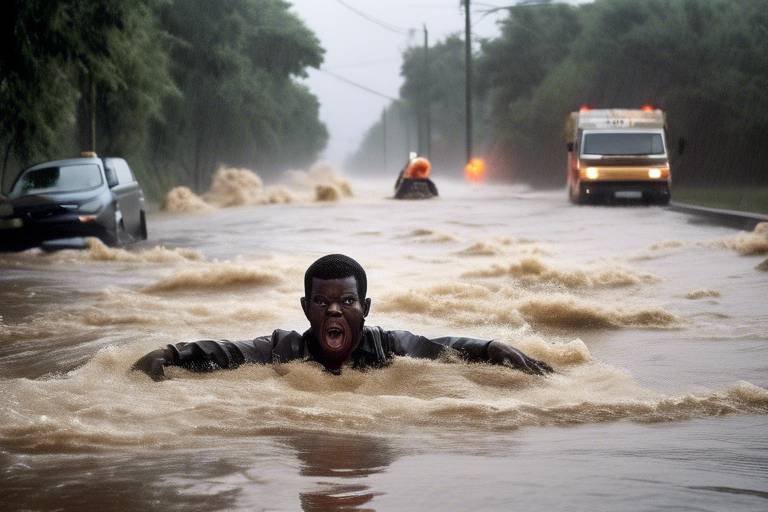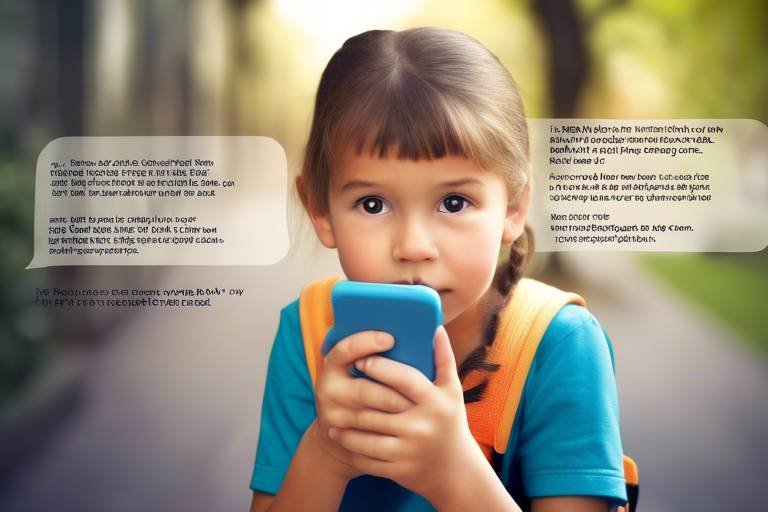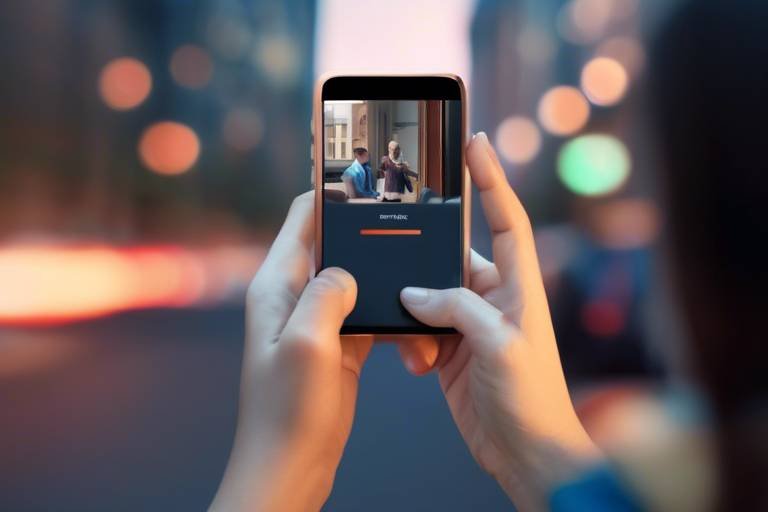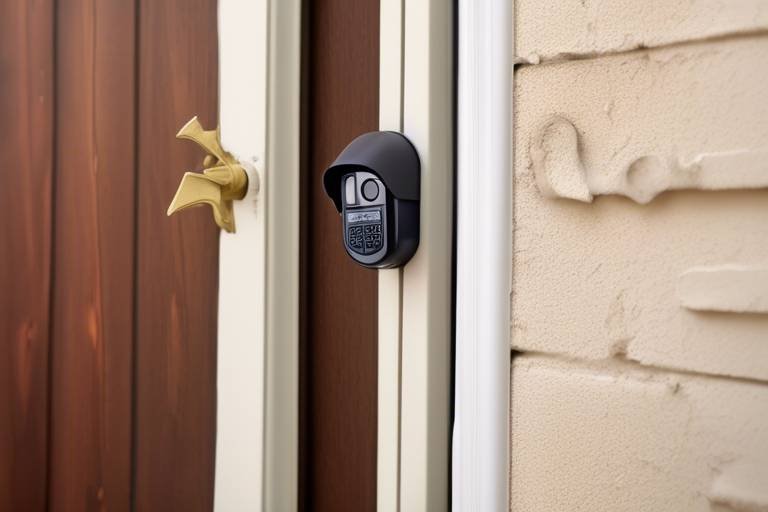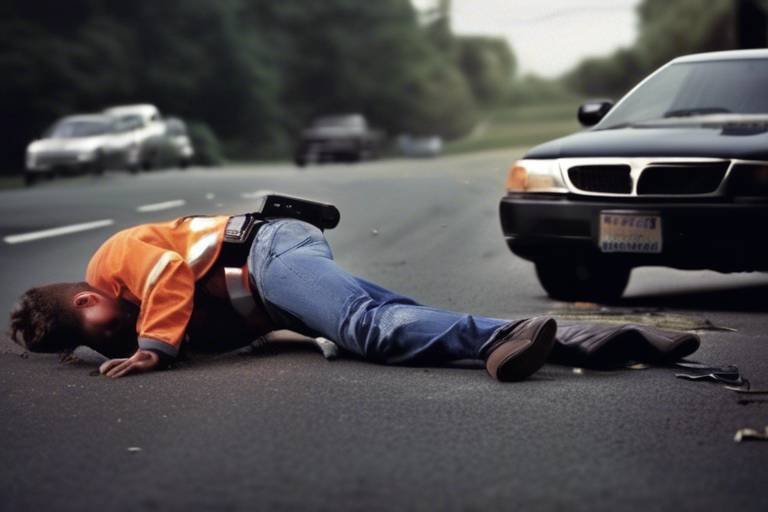Personal Safety: Combatting Fear with Preparation
In today's world, the importance of personal safety cannot be overstated. With the rapid pace of life and the unpredictability of our surroundings, feeling secure is more essential than ever. But how do we combat the nagging fear that often accompanies our daily routines? The answer lies in preparation. By equipping ourselves with knowledge and strategies, we can transform anxiety into confidence. This article delves into the various aspects of personal safety, offering practical tips and insights that empower individuals to navigate their environments with assurance.
Personal safety encompasses a wide range of measures and precautions that individuals take to protect themselves from potential harm. It’s not just about avoiding dangerous situations; it’s about being aware of your surroundings and understanding the dynamics of your environment. Think of personal safety as a shield—the stronger it is, the less likely you are to face threats. By cultivating an awareness of your surroundings, you can identify potential risks and respond effectively. Remember, being proactive is far more effective than being reactive.
Recognizing potential threats in your daily life is crucial for maintaining personal safety. This involves understanding the common dangers that lurk in various environments, whether at home, work, or while out and about. For instance, consider the following potential threats:
- Unattended bags in public places
- Dark and isolated areas
- Suspicious individuals
- Unfamiliar neighborhoods
Being able to assess these risks allows you to take proactive measures to protect yourself. Always trust your instincts—if something feels off, it probably is. By staying vigilant and aware, you can significantly reduce your chances of encountering danger.
Your home should be your sanctuary, a place where you feel the safest. To enhance security at home, consider implementing the following practical tips:
- Install high-quality locks on all doors and windows.
- Use outdoor lighting to illuminate entry points.
- Participate in neighborhood watch programs.
Each of these measures acts as a barrier against potential intruders, providing you with peace of mind. Additionally, regularly reviewing your home security can help you identify any vulnerabilities that may arise over time.
Having a plan for emergencies can truly be a lifesaver. Whether it’s a natural disaster, fire, or another crisis, being prepared can make all the difference. Start by creating a comprehensive emergency plan that includes:
- Evacuation routes
- Emergency contact information
- Essential supplies and their locations
By familiarizing yourself with these plans, you can ensure that you and your loved ones are ready to act swiftly in dire situations. Remember, preparation is the key to reducing panic and confusion when emergencies strike.
Understanding basic self-defense techniques can empower you to protect yourself in threatening situations. It’s not about being a martial arts expert; even simple techniques can make a significant difference. Consider taking a self-defense class to learn effective strategies that can help you escape dangerous scenarios. Remember, the goal is to create an opportunity to get to safety, not to engage in a fight.
Traveling can expose individuals to various risks, but with the right precautions, you can enjoy your adventures without compromising your safety. Here are some tips to keep in mind:
- Research your destination thoroughly.
- Use reputable transportation options.
- Stay aware of your surroundings at all times.
By staying informed and alert, you can navigate new places with confidence and minimize potential risks.
In our digital age, technology plays an increasingly vital role in personal safety. From safety apps to smart home devices, there are numerous tools available that can enhance your security and provide quick access to help when needed. Embracing these technologies can significantly bolster your personal safety strategy.
Safety apps can provide real-time assistance and alerts, keeping you connected and informed about your surroundings. Some popular safety applications include:
- Life360: For family location sharing
- SafeTrek: For emergency assistance
- bSafe: For SOS alerts and location tracking
These apps can act as your safety net, offering peace of mind while you go about your day.
Smart technology can significantly enhance home security. Devices like smart locks, cameras, and alarms not only deter intruders but also allow you to monitor your home remotely. Investing in these technologies can create a safer living environment and provide you with greater control over your personal safety.
Q: How can I improve my personal safety at home?
A: You can enhance your home security by installing quality locks, using outdoor lighting, and participating in neighborhood watch programs.
Q: What should I do if I feel threatened in public?
A: Trust your instincts, seek help from nearby individuals, and try to move to a safer location.
Q: Are safety apps worth the investment?
A: Yes, safety apps can provide valuable real-time assistance and enhance your awareness of your surroundings.
By taking these steps and embracing a proactive approach to personal safety, you can combat fear and empower yourself to navigate the world with confidence.

Understanding Personal Safety
Personal safety is not just a buzzword; it’s a vital aspect of our daily lives that can significantly impact our overall well-being. At its core, personal safety refers to the measures and precautions individuals take to protect themselves from harm. Imagine walking down the street and feeling a sense of unease because you’re not aware of your surroundings. That’s where the importance of understanding personal safety comes in. By being aware and prepared, you can transform fear into confidence.
The concept of personal safety extends beyond physical harm. It encompasses emotional and psychological well-being as well. For instance, feeling secure in your environment allows you to focus on your daily tasks without the nagging worry of potential threats. This is why it’s crucial to cultivate an awareness of your surroundings. Whether you’re at home, at work, or out and about, being alert can help you identify situations that may pose risks.
To truly grasp personal safety, consider these fundamental principles:
- Awareness: Always be conscious of your surroundings. This means noticing who is around you, the environment, and any unusual behavior.
- Preparation: Have a plan in place for various scenarios. Knowing what to do in an emergency can make all the difference.
- Prevention: Take proactive steps to minimize risks, such as securing your home and avoiding dangerous areas.
Understanding these principles can empower you to take control of your safety. Think of it like a game of chess; the more moves you anticipate, the better prepared you are to counter threats. For example, if you know that a certain area tends to have higher crime rates, you can choose to avoid it or be extra vigilant when passing through. This kind of strategic thinking is essential for maintaining personal safety.
Moreover, personal safety is a shared responsibility. It’s not just about individual actions; it involves community awareness and support. Engaging with your neighbors and participating in local safety initiatives can create a safer environment for everyone. Consider joining a neighborhood watch program or attending community safety workshops. These initiatives not only enhance your safety but also foster a sense of belonging and trust within your community.
In conclusion, understanding personal safety is about more than just avoiding danger; it’s about creating a mindset that prioritizes security and well-being. By staying aware, preparing for potential threats, and participating in community safety efforts, you can significantly reduce the anxiety that often accompanies fear. Remember, safety is not an accident; it’s a choice, and it starts with you.

Identifying Potential Threats
When it comes to personal safety, awareness is your best friend. Recognizing potential threats in your daily life is not just about being paranoid; it's about being prepared. Think of it like navigating through a dense jungle. If you don’t pay attention to your surroundings, you might trip over a vine or encounter a snake. Similarly, in our everyday lives, there are various dangers lurking around that we must be vigilant about. Whether it's in your home, at work, or out in public, understanding what could go wrong is the first step toward mitigating those risks.
Many people underestimate the importance of situational awareness. It's not just about being alert; it’s about actively observing your environment and assessing potential risks. For instance, when you’re in a crowded area, take a moment to notice who is around you. Are there any suspicious individuals? Is there an exit nearby? These small observations can make a significant difference in your safety. Remember, your gut instinct is often your best alarm system. If something feels off, it probably is.
To help you identify potential threats, consider the following common dangers:
- Environmental Hazards: These include things like slippery floors, poor lighting, and uneven surfaces. Always be mindful of your surroundings.
- Personal Interactions: Be cautious of strangers approaching you, especially in isolated areas. Trust your instincts if someone seems too eager to engage.
- Online Threats: In our digital age, cyber threats are rampant. Be aware of phishing scams, suspicious links, and personal information sharing.
Each of these threats requires a different approach to assess and mitigate. For example, if you notice poor lighting in a parking lot, consider parking in a well-lit area or bringing a friend along. When dealing with personal interactions, always have a plan for how to disengage from a conversation that feels uncomfortable. And when it comes to online threats, utilize strong passwords and be cautious about the information you share on social media.
Furthermore, it’s essential to regularly evaluate your environment. This could mean conducting a safety audit of your home or workplace. Look for vulnerabilities, such as weak locks or inadequate lighting, and take proactive measures to address them. You can create a simple table to track these assessments:
| Location | Potential Threat | Action to Mitigate |
|---|---|---|
| Home | Weak locks | Install deadbolts |
| Office | Poor lighting | Add more lights |
| Public Transport | Suspicious individuals | Change seats or alert staff |
By identifying potential threats and taking proactive measures, you can significantly enhance your personal safety. Remember, it’s not about living in fear but rather about empowering yourself with knowledge and preparation. So, the next time you step out, ask yourself: What could go wrong? And how can I be ready for it?
Q1: What should I do if I feel threatened in a public space?
A1: Trust your instincts. If you feel unsafe, try to move to a more populated area, contact security personnel, or call for help if necessary.
Q2: How can I improve my situational awareness?
A2: Practice being present. Avoid distractions like your phone, and take a few moments to observe your environment regularly.
Q3: Are there specific apps that can help with personal safety?
A3: Yes, there are several safety apps available that can send alerts to friends or family, track your location, and even contact emergency services.
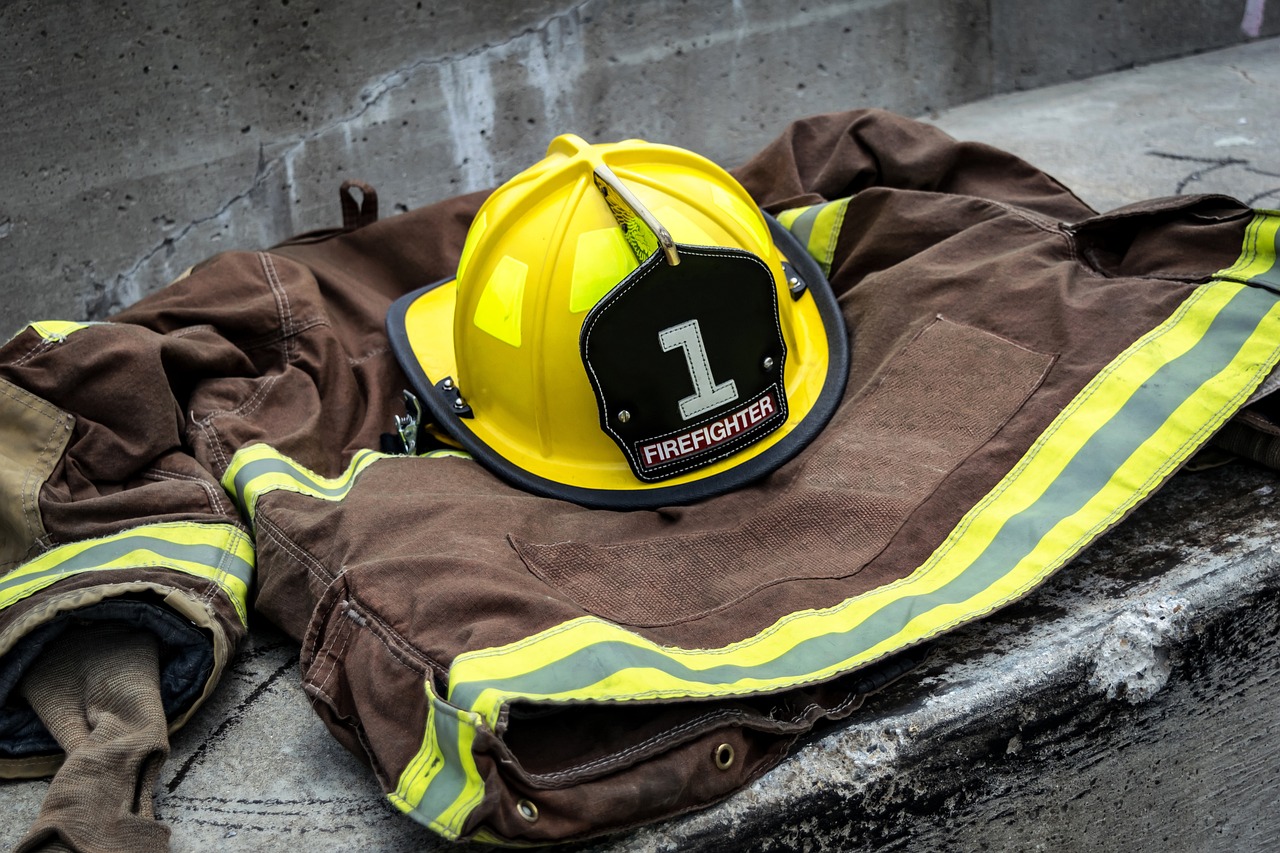
Home Safety Precautions
Home is often regarded as a sanctuary, a place where we seek refuge from the chaos of the outside world. However, ensuring that our haven remains secure is paramount. To bolster home safety, there are several practical precautions you can implement. It’s not just about locking the door; it’s about creating an environment that deters intruders and promotes peace of mind.
First and foremost, consider your entry points. Doors and windows are the primary access points for potential intruders. Invest in high-quality locks and consider deadbolts for added security. Additionally, reinforcing door frames and using security bars on windows can significantly enhance your home’s defenses. Remember, a well-lit exterior can deter unwanted visitors. Install motion-sensor lights around your property to illuminate dark areas, making it less appealing for anyone looking to trespass.
Another vital aspect of home safety is the community. Engaging with your neighbors can create a supportive network. Establishing a neighborhood watch program not only fosters community spirit but also enhances vigilance. When everyone looks out for one another, it becomes significantly harder for suspicious activities to go unnoticed. Make it a habit to share information about unusual occurrences or potential threats, as awareness is the first step toward prevention.
Moreover, technology can play a crucial role in enhancing home security. Consider installing a home security system that includes alarms, cameras, and monitoring services. Not only do these systems provide real-time alerts, but they also serve as a psychological deterrent for would-be intruders. Many modern systems allow you to monitor your home remotely via smartphone apps, giving you peace of mind even when you’re away.
In addition to physical security measures, it’s essential to develop a safety plan that includes emergency protocols. In case of a break-in or any other emergency, having a clear plan can make a significant difference. Discuss with your family what to do in such situations, where to meet, and how to contact authorities. Regularly practicing these scenarios can ensure everyone knows their role, reducing panic and confusion during a crisis.
Lastly, don’t underestimate the power of simple habits. Always lock your doors and windows before leaving home or going to bed, even if you’re just stepping out for a moment. Be cautious about sharing your location on social media, particularly when you’re away from home. These small actions can greatly enhance your safety and security.
In summary, home safety is a multifaceted approach that combines physical security measures, community engagement, technology, and personal vigilance. By taking these precautions, you can create a safer living environment that not only protects you but also fosters a sense of security for your loved ones.
Q: What are the most effective locks for home security?
A: Deadbolts are generally considered the most effective locks for home security. Additionally, smart locks offer convenience and increased security features.
Q: How can I make my home less appealing to burglars?
A: Keep your property well-lit, maintain your yard, and avoid leaving valuables in plain sight. Consider using timers for lights when you’re away to give the appearance that someone is home.
Q: Is a security system worth the investment?
A: Yes, a security system can provide peace of mind and deter potential intruders. Many systems are customizable to fit your specific needs and budget.
Q: How can I get my neighbors involved in home safety?
A: Start by organizing a neighborhood watch meeting to discuss safety concerns and establish communication channels. Encourage everyone to share information and look out for one another.
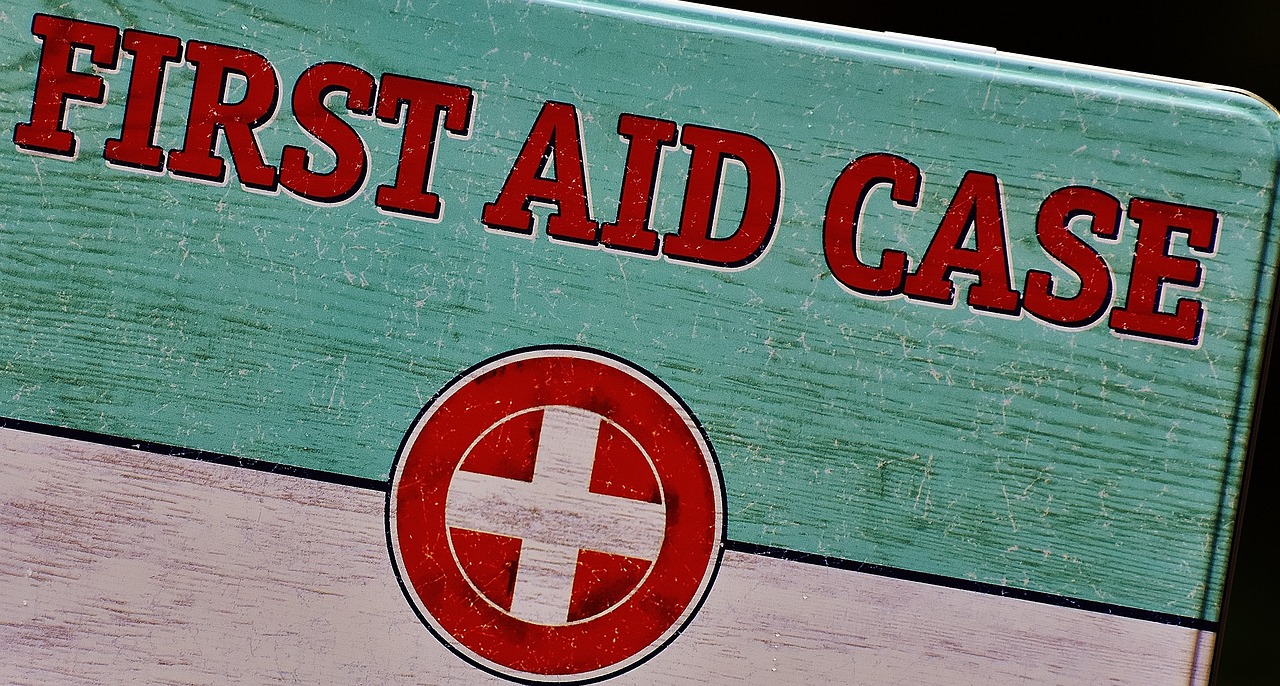
Emergency Preparedness Plans
When life throws unexpected challenges our way, having a solid emergency preparedness plan can make all the difference. Think of it as your personal safety net; without it, you might find yourself flailing in chaos when disaster strikes. Whether it's a natural disaster like a hurricane, an unexpected fire, or even a personal emergency, being prepared means you're ready to face the storm with confidence rather than fear.
First and foremost, you need to identify the types of emergencies that are most likely to occur in your area. For instance, if you live in a region prone to earthquakes, your plan should include specific steps to take during and after a quake. On the other hand, if floods are a common threat, knowing how to evacuate and where to go is crucial. The key is to tailor your plan to your unique circumstances and environment.
Once you've identified potential threats, it's time to create a comprehensive plan. Here are some essential components that should be included:
- Communication Plan: Establish how your family will communicate during an emergency. This could include designating a meeting place and ensuring everyone knows how to reach each other.
- Emergency Kit: Assemble a kit with essential supplies such as water, food, first aid materials, and any medications you might need. This kit should be easily accessible and regularly updated.
- Evacuation Routes: Know the safest routes out of your home and community. Practice these routes with your family to ensure everyone is familiar with them.
It's also wise to conduct regular drills. Just like fire drills in schools, practicing your emergency plan can significantly increase your chances of staying calm and collected when a real emergency occurs. These drills can help you identify any gaps in your plan and allow you to make necessary adjustments.
Moreover, consider the emotional aspect of emergencies. They can be incredibly stressful, and having a plan helps to reduce anxiety. It’s like having a roadmap in a foreign country; it gives you direction and peace of mind. Involving your family in the planning process can also help everyone feel more secure and prepared.
Lastly, make sure to stay informed. Keep an eye on local news and weather reports, and consider signing up for emergency alerts in your area. Knowledge is power, and being informed can help you make better decisions in a crisis.
In summary, an effective emergency preparedness plan is not just about having supplies; it’s about understanding potential threats, creating a tailored plan, practicing it, and staying informed. By taking these steps, you can transform fear into empowerment, knowing that you and your loved ones are ready to face whatever challenges may come your way.
1. What should be included in an emergency kit?
Your emergency kit should include water, non-perishable food, a flashlight, batteries, a first aid kit, medications, and important documents. Tailor it to your specific needs!
2. How often should I review my emergency plan?
It's a good practice to review and update your emergency plan at least once a year or whenever there are significant changes in your household.
3. What is the best way to communicate during an emergency?
Designate a family member or friend outside your area as a point of contact. This helps ensure that everyone can communicate even if local lines are down.
4. Are there any resources for creating an emergency plan?
Yes! Organizations like the Red Cross and FEMA provide templates and guidelines to help you create a comprehensive emergency plan tailored to your needs.

Self-Defense Techniques
Understanding and mastering can be a game changer in ensuring your personal safety. It's not just about physical strength; it's about confidence, awareness, and knowing how to react in potentially dangerous situations. Imagine walking down a street, and you sense someone following you. Instead of panicking, you recall a few simple techniques that can help you escape or defend yourself. This knowledge can transform fear into empowerment.
One of the most effective self-defense techniques is learning how to create distance between you and an attacker. This can be achieved through simple movements, such as stepping aside or using your body to shield yourself. Additionally, using your voice to assertively shout can attract attention and deter an assailant. It's important to remember that self-defense is about survival, not about winning a fight. Your goal is to escape safely.
Another critical aspect of self-defense is targeting vulnerable areas on an attacker’s body. Areas such as the eyes, nose, throat, and groin are particularly sensitive. A well-placed strike to any of these areas can give you the time you need to escape. For instance, a quick jab to the eyes can momentarily blind an attacker, allowing you to make your getaway. Practicing these techniques in a safe environment can build muscle memory, making your reactions instinctive when it matters most.
Moreover, enrolling in a self-defense class can be incredibly beneficial. These classes not only teach you practical techniques but also boost your confidence and situational awareness. Many community centers and gyms offer classes tailored for beginners, focusing on techniques that are easy to learn and effective. You’ll be amazed at how quickly you can pick up skills that could potentially save your life.
It’s also essential to understand the legal implications of self-defense. Knowing when and how you can legally defend yourself can prevent complications down the road. In many places, self-defense is justified when you are faced with an immediate threat. However, using excessive force can lead to legal consequences. Therefore, educating yourself on local laws regarding self-defense is crucial.
In summary, self-defense is not just about physical combat; it’s about awareness, strategy, and preparation. By learning some basic techniques, understanding your surroundings, and preparing mentally, you can significantly enhance your personal safety. Remember, the best defense is often a good offense: being aware and prepared can help you avoid dangerous situations before they escalate.
- What is the best self-defense technique for beginners? Many experts recommend starting with basic strikes to vulnerable areas, such as the eyes and throat, along with learning how to escape holds.
- Do I need to be physically strong to defend myself? No, self-defense is more about technique and strategy than physical strength. Many successful self-defense techniques rely on leverage and timing.
- How can I practice self-defense safely? Consider joining a self-defense class where you can practice techniques with trained instructors and in a controlled environment.
- What should I do if I feel threatened? Trust your instincts. If you feel uncomfortable, try to remove yourself from the situation, seek help, or use self-defense techniques if necessary.

Staying Safe While Traveling
Traveling can be one of life's greatest adventures, but it also comes with its fair share of risks. Imagine stepping into a new city, filled with excitement and curiosity, yet feeling a twinge of anxiety about your safety. This is a common sentiment, but with the right strategies in place, you can transform that anxiety into confidence. First and foremost, situational awareness is key. Always be mindful of your surroundings, whether you’re strolling through a bustling market or waiting for public transport. Trust your instincts—if something feels off, it probably is.
Another essential aspect of staying safe while traveling is planning ahead. Before you embark on your journey, research your destination thoroughly. Familiarize yourself with the local customs, laws, and any areas that may be considered unsafe. This knowledge can be invaluable. For instance, knowing the safest neighborhoods to stay in can prevent you from wandering into areas that might be risky. Additionally, consider the following safety tips:
- Secure Your Belongings: Use anti-theft bags and keep your valuables close. A money belt worn under your clothes can be a lifesaver.
- Stay Connected: Share your itinerary with a trusted friend or family member. Regular check-ins can provide peace of mind.
- Use Reputable Transportation: Opt for well-known taxi services or rideshare apps instead of hailing a cab off the street.
Moreover, it's wise to have a backup plan. In the event of an emergency, know where the nearest hospital or police station is located. Carry a printed copy of important documents like your passport, travel insurance, and emergency contacts. Digital copies stored on your phone can also be helpful, but remember that technology can fail, so having hard copies is a smart move.
When it comes to accommodations, choose wisely. Look for hotels or hostels with good reviews and security measures in place. Many modern establishments offer features like 24-hour reception and in-room safes, which can provide an extra layer of security. If you're using platforms like Airbnb, read reviews carefully and ensure the property is in a safe neighborhood.
Lastly, don't underestimate the power of local knowledge. Engage with locals; they can offer insights into the best places to visit and the ones to avoid. Often, they can share tips that aren't found in travel guides, making your experience richer and safer. Remember, traveling should be fun and enriching, so equip yourself with the right knowledge and tools to ensure your safety.
Q: What should I do if I feel unsafe while traveling?
A: Trust your instincts. If you feel unsafe, remove yourself from the situation. Seek help from local authorities or find a safe place to go.
Q: How can I keep my belongings secure while traveling?
A: Use anti-theft bags, keep your valuables close, and avoid displaying expensive items in public.
Q: What should I do in case of an emergency?
A: Have a plan in place. Know the location of the nearest hospital or police station, and keep emergency contact numbers handy.
Q: Are there any apps that can help with travel safety?
A: Yes! There are several safety apps available that provide real-time alerts, emergency contacts, and even location sharing with trusted friends.
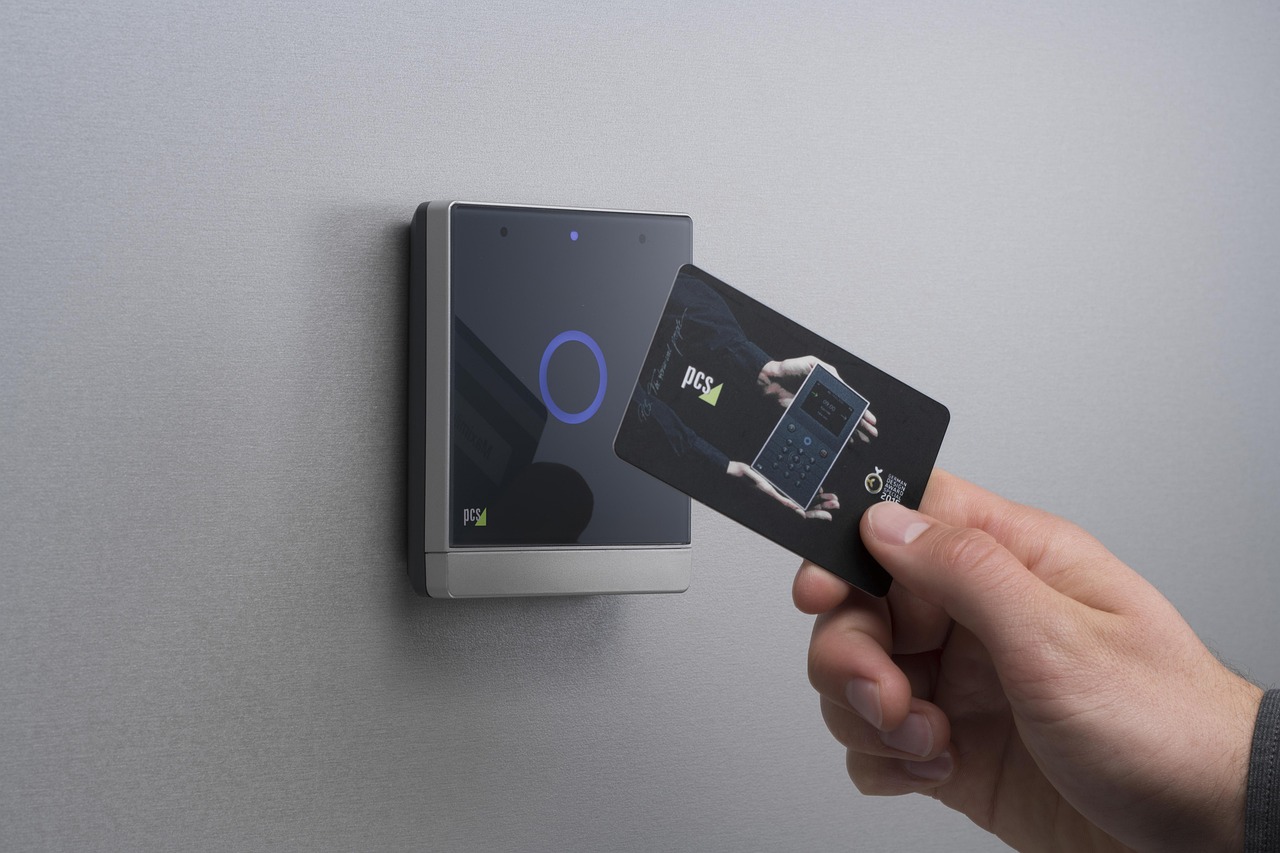
The Role of Technology in Safety
In today's fast-paced world, technology has become an indispensable ally in the quest for personal safety. Imagine walking down a dimly lit street and feeling a sense of unease; now, picture pulling out your smartphone and accessing an app that can notify your friends or emergency services with just a tap. This is the power of technology in enhancing our safety. From personal safety apps to smart home devices, technology offers a myriad of solutions designed to keep us secure and informed.
One of the most significant advancements in personal safety is the development of safety apps. These applications provide real-time assistance, allowing users to send alerts to trusted contacts or authorities in case of an emergency. For example, apps like Life360 and bSafe not only share your location but also offer features such as emergency SOS buttons and location history. This means that if something goes wrong, help is just a button press away. The convenience of having such tools at our fingertips cannot be overstated, especially for those who frequently travel alone or find themselves in unfamiliar environments.
In addition to mobile apps, smart home devices have revolutionized the way we think about home security. Imagine a scenario where you can monitor your home from anywhere in the world. With smart locks, cameras, and alarms, homeowners can keep an eye on their property through their smartphones. For instance, a smart doorbell camera allows you to see who is at your door, even when you're miles away. This not only deters potential intruders but also provides peace of mind knowing that you can keep tabs on your home at all times. Below is a comparison table of popular smart home devices:
| Device | Functionality | Example |
|---|---|---|
| Smart Locks | Remote locking/unlocking, access control | August Smart Lock |
| Security Cameras | Live streaming, motion detection alerts | Ring Video Doorbell |
| Smart Alarms | Alerts for unusual activity, integration with other devices | SimpliSafe |
Moreover, the integration of technology extends beyond just personal devices and apps. Innovations such as wearable safety devices have emerged, offering features like emergency alerts and location tracking. These devices are particularly beneficial for vulnerable populations, including children and the elderly. For example, a child can wear a safety bracelet that alerts parents if they wander too far from a designated area. This not only enhances safety but also fosters a sense of independence.
As we navigate through the complexities of modern life, it’s essential to stay informed about the latest technological advancements that can aid in personal safety. However, it's equally important to remember that technology should complement, not replace, our instincts and awareness. While a safety app can alert your contacts in an emergency, being aware of your surroundings and trusting your instincts is irreplaceable.
In conclusion, technology plays a crucial role in enhancing personal safety. From apps that keep us connected to smart devices that secure our homes, these innovations provide us with tools to combat fear and anxiety. So, the next time you step out, consider how technology can empower you to feel more secure and prepared. After all, in a world where uncertainty often looms, being equipped with the right tools can make all the difference.
- What are some recommended safety apps? Popular safety apps include Life360, bSafe, and Noonlight, which provide various features for emergency assistance and location sharing.
- How do smart home devices enhance security? Smart home devices like cameras and locks allow you to monitor and control your home remotely, providing real-time alerts and peace of mind.
- Are wearable safety devices effective? Yes, wearable safety devices can be highly effective, especially for vulnerable individuals, as they offer emergency alerts and location tracking.

Using Safety Apps
In today's digital age, safety apps have become indispensable tools for enhancing personal security. With just a few taps on your smartphone, you can access a wealth of resources designed to keep you safe. Imagine having a virtual safety net at your fingertips, ready to assist you in times of need. These applications not only provide real-time assistance but also empower users with information and alerts that can make a significant difference in emergency situations.
Safety apps come in various forms, each offering unique features tailored to different scenarios. For instance, some apps focus on location tracking, allowing friends and family to know your whereabouts, while others provide emergency contacts at the push of a button. With the rise of technology, it's crucial to stay informed about which apps can best serve your needs. Here’s a quick overview of some popular safety apps that you may find beneficial:
| App Name | Features | Platform |
|---|---|---|
| Life360 | Family location tracking, emergency alerts | iOS, Android |
| bSafe | Live GPS tracking, SOS button, voice activation | iOS, Android |
| SafeTrek | Hold to alert police, easy to use interface | iOS, Android |
| Noonlight | Emergency response integration, location sharing | iOS, Android |
When choosing a safety app, consider factors such as user-friendliness, reliability, and the specific features that matter most to you. For example, if you often travel alone, an app with real-time location sharing may be particularly useful. On the other hand, if you’re concerned about personal safety while running or exercising outdoors, look for an app with a built-in SOS feature.
Additionally, many of these apps allow you to customize your settings to suit your preferences. You can choose who can see your location, set up automatic alerts for certain situations, and even connect with local authorities if necessary. The key is to find an app that aligns with your lifestyle and provides peace of mind.
In a world where unpredictability is the norm, safety apps serve as a beacon of hope and security. They remind us that while we cannot control everything, we can certainly take steps to protect ourselves. By incorporating these digital tools into your daily routine, you can navigate life with greater confidence, knowing that help is just a touch away.
In conclusion, leveraging technology through safety apps not only enhances your personal security but also fosters a sense of community. When you share your location with trusted friends or family members, you create a network of support that can be invaluable in times of crisis. So, take a moment to explore the options available and equip yourself with the right tools to stay safe.
- What are safety apps? Safety apps are mobile applications designed to enhance personal security by providing features such as location tracking, emergency alerts, and communication with authorities.
- Are safety apps free? Many safety apps offer free versions with basic features, while others may require a subscription for advanced functionalities.
- How do I choose the right safety app? Consider your specific needs, the app's features, user reviews, and compatibility with your device before making a choice.
- Can safety apps replace traditional safety measures? While safety apps are useful tools, they should complement traditional safety measures rather than replace them entirely.
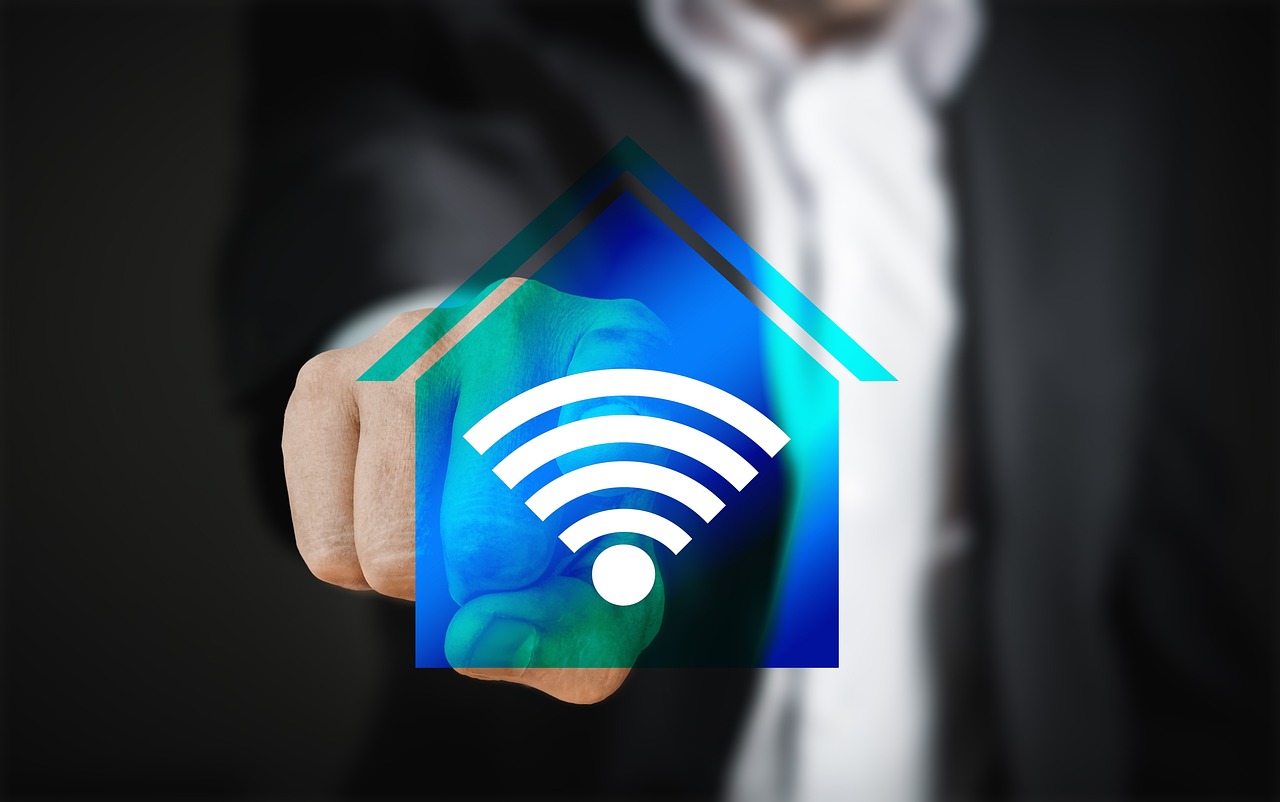
Smart Home Devices
In today's fast-paced world, have emerged as a game-changer in enhancing personal safety. Imagine being able to monitor your home from anywhere in the world with just a few taps on your smartphone. That's the power of smart technology! These devices not only provide convenience but also serve as a formidable line of defense against potential threats. From smart locks to security cameras, the integration of technology into our living spaces has revolutionized how we protect ourselves and our loved ones.
One of the most significant advantages of smart home devices is their ability to offer real-time alerts. For instance, smart security cameras can send notifications directly to your phone if they detect unusual movement in or around your home. This feature allows you to stay informed and take action before a situation escalates. It's like having a virtual security guard watching over your property 24/7!
Moreover, the installation of smart locks enhances your home security by allowing you to control access remotely. You can lock or unlock your doors from anywhere, ensuring that you never have to worry about losing your keys again. Some smart locks even come equipped with temporary access codes, perfect for letting guests or service providers in without compromising your security.
To give you a clearer picture of how these devices can transform your home into a safer haven, here's a table summarizing some popular smart home devices and their features:
| Device | Features |
|---|---|
| Smart Locks | Remote locking/unlocking, temporary access codes, activity logs |
| Security Cameras | Live streaming, motion detection alerts, night vision |
| Smart Alarms | Real-time alerts, integration with other smart devices, remote monitoring |
| Video Doorbells | Two-way audio, motion detection, HD video feed |
Another exciting feature of smart home devices is their ability to integrate with other systems. For example, you can connect your security cameras to your smart lighting system. If a camera detects movement, it can trigger the lights to turn on, creating the illusion that someone is home, which can deter potential intruders. This interconnectedness not only enhances security but also provides peace of mind, knowing that your home is equipped with the latest technology to keep you safe.
In conclusion, investing in smart home devices is a proactive step towards enhancing your personal safety. They offer a blend of convenience and security that traditional methods simply can't match. As technology continues to evolve, so too will the ways in which we protect ourselves and our homes. So, why not embrace this innovative approach to safety? It’s time to make your home a fortress with the help of smart technology!
- What are smart home devices? Smart home devices are electronic devices that connect to the internet and can be controlled remotely, providing enhanced security and convenience.
- How do smart locks work? Smart locks can be controlled via a smartphone app, allowing users to lock or unlock doors remotely and manage access for others.
- Can I monitor my home while traveling? Yes! Many smart home devices, like security cameras, allow you to monitor your home in real-time from anywhere using your smartphone.
- Are smart home devices easy to install? Most smart home devices are designed for easy installation, often requiring no professional help, although some may benefit from expert installation.
Frequently Asked Questions
- What is personal safety and why is it important?
Personal safety refers to the measures we take to protect ourselves from harm in various situations. It's crucial because being aware of our surroundings and knowing how to respond can significantly reduce anxiety and fear, enabling us to navigate daily life with confidence.
- How can I identify potential threats in my environment?
To identify potential threats, stay alert and observe your surroundings. Look for unusual behavior, assess the safety of your environment, and trust your instincts. Being proactive about recognizing risks can help you take necessary precautions before a situation escalates.
- What are some effective home safety precautions?
Enhancing home safety can include installing quality locks, using motion-activated lighting, and participating in neighborhood watch programs. Simple measures like securing windows and doors can deter intruders and create a safer living environment.
- How do I create an emergency preparedness plan?
Creating an emergency preparedness plan involves identifying potential emergencies (like fires or natural disasters), establishing communication methods, and preparing an emergency kit. Regularly practicing the plan with your family ensures everyone knows what to do in case of a crisis.
- What basic self-defense techniques should I know?
Some basic self-defense techniques include learning how to break free from holds, using your voice to attract attention, and targeting vulnerable areas of an attacker. Consider taking a self-defense class to practice these techniques and build confidence.
- How can I stay safe while traveling?
To stay safe while traveling, research your destination, keep your belongings secure, and be aware of your surroundings. Use reputable transportation options and stay in well-reviewed accommodations to minimize risks while exploring new places.
- What role does technology play in personal safety?
Technology enhances personal safety through various tools such as safety apps, smart home devices, and GPS tracking. These resources can provide real-time assistance, alerts, and monitoring, making it easier to stay safe and connected.
- What are some popular safety apps I can use?
Some popular safety apps include Life360 for location sharing, bSafe for emergency alerts, and Citizen for real-time safety updates. These apps help you stay informed and connected with friends and family, enhancing your overall safety.
- How do smart home devices improve home security?
Smart home devices, such as cameras, smart locks, and alarm systems, provide enhanced security by allowing you to monitor your home remotely. They can send alerts to your phone and enable you to control access to your home, making it a safer place to live.


